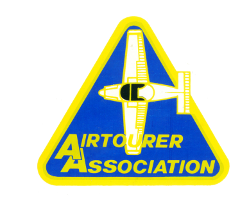Victa Report AER-4, February 1965
INTRODUCTION
Victa Airtourers 100 and 115 are both approved by the Australian Dept of Civil Aviation to perform two-turn spins from any attitude for training, demonstration or any other purposes. On the strength of that, this design had received it’s Type approval in Fully Aerobatic Category in July, 1962. Both types (of which 105 have been built to date) are being produced in quantity of 100 A/C per annum at the Victa Aviation plant at Milperra, N.S.W., and are used as training aircraft by 35 Aero Clubs in Australia and New Zealand.
BRIEF STORY OF AIRTOURER SPINNING TRIALS.
Prior to it’s certification the Airtourer underwent 6 months extensive spinning trials and some modifications of tail end and control angles were found necessary. The final production configuration is D.C.A. approved to two turns of spin in service or four turns in flight tests by Victa pilots. In it’s original prototype form the aircraft could be made to enter a flat type spin, after five turns if out-spin aileron was used, from which the recovery was prolonged and difficult and furthermore required an unusual form of control application, namely the in-spin aileron deflection, both quite unacceptable for a training aircraft. Consequently the relevant control angles, namely rudder, (port and starboard) and up elevator angles were reduced and the control stops strengthened. It is now impossible to enter a stable mode spin using any combination of controls and/or C.G. positions (even with 1% of SMC aft of rearmost limit.)
AERODYNAMICS.
Wind tunnel tests on a similar configuration, were conducted at the Aeronautical Research laboratories at very high angles of incidence, and flight tests using streamer techniques were carried out in order to ascertain the aerodynamic reasons behind the two modes of spin. A colour film taken in the spin as well as the wind tunnel data are available.
It has been proven that the initial two turns of spin are those of a true spin, namely the inboard wing is deeply stalled with a wake thickness of 2-2 ½ feet depth – whereas the outboard wing becomes unstalled as the rotation develops with the fuselage acting as an end plate, completely separating the two wings. Due to insufficient control angles, particularly the elevator up angle, the aircraft nose down pitching moment is too high for the elevator nose up moment and thus cannot be balanced. Consequently the spin develops quickly into an unsteady mode of spin, with airspeed steadily increasing until it reaches such high values (in the fourth or fifth turn) that the aircraft either unstalls and recovers on it’s own accord, or there looms a danger of exceeding the Vne on recovery. Measured along the normal (vertical) axis the acceleration force does not exceed 2.8 G during the rotation with full up elevator and speeds exceeding 120 knots. This alone proves that this unstable rotation is a spin and not a spiral, otherwise at 120 knots with full up elevator 6 G would be long exceeded in a pure spiral (Va = 122 knots EAS at 6 G).
STRUCTURAL PROBLEMS
As a result of one wing being deeply stalled in a spin and the other one still flying, the respective wakes behind them are entirely different. Consequently, the tail unit, situated in such airflow is subjected to high asymmetric bending moments of an unusual and novel type, never before described or calculated.
On the inspin side the tailplane and elevator are both stalled and are submerged in a wake of high turbulence and low velocity, so low that the resultant load on this side can be ignored. On the outspin half, the tailplane has a measured incidence of about 11 degrees and is supplied with a steady airflow of full airspeed. The fullup elevator of 21 degrees is incapable of overcoming the large negative pitching moment due to tailplane incidence and the stalled wing. This effect puts on the tail a high asymmetric down load and drag load. The magnitude of the resulting bending moments in two planes were found to be much more critical than any other design tail load required by ANOs, BCARs or CAM3s. Discovering such a high asymmetric drag load on the tailplane and elevator in a spin is claimed to be an original Victa finding, and is believed to apply generally to other aircraft. The proving of this load explained the service cracking of the original tailplane to fuselage fittings in 150-200 hours. These had to be completely redesigned to carry about twice the then ANO asymmetric tail load. The redesigned fittings have not shown any signs of deterioration in service life of 1,000 and more hours.
SUMMARY
It is the opinion of the Australian Dept. of Civil Aviation and of operators with many thousands of hours of training experience in the Victa Airtourer, that it is safe in all phases of spinning and that it is completely suitable for training purposes as it enters and recovers from a spin of up to two turns using conventional technique, and this provides a clean demonstration to the student of the techniques of spin initiation and recovery.
 Airtourer Association Inc.
Airtourer Association Inc.